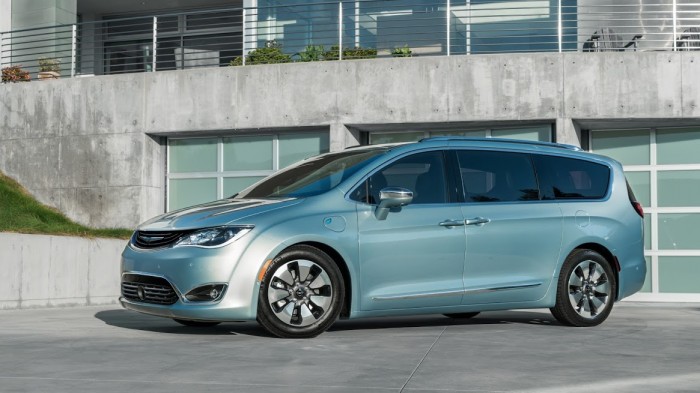Why Alphabet Thinks Minivans Make Perfect Self-Driving Taxis
Alphabet raised some eyebrows when it announced recently that it had teamed up with Chrysler to create a fleet of 100 autonomous minivans. Cutting-edge robotics technology and cars seen by many as the dullest of all vehicles struck some people as a strange combination.
On Tuesday, a hardware engineer working on Alphabet’s project explained one reason why Fiat Pacifica minivans are a good fit—they have electronically closing doors. Daniel Rosenband told an audience at the Hot Chips semiconductor industry conference that they’re needed to provide the experience people expect of an autonomous taxi.
“We realized if you drop people off in a self-driving car they expect the car to do what it’s going to do—and that includes closing its door,” said Rosenband.

An autonomous car without that feature might even get stranded if a passenger in a hurry ran off without closing the door. The vehicle would have to somehow call a human for help before it could drive off again.
The door problem illustrates how Alphabet and others hoping to create autonomous taxi fleets have a lot of design and user experience work to do. Today’s cars are designed with the assumption that they are fully controlled by humans. And it’s unclear what expectations people will have about the experience of a self-driving ride service.
Uber is also thinking about those challenges. Last week the company announced that some ride requests in Pittsburgh will be fulfilled by prototype self-driving cars (with safety drivers behind the wheel).
The experiment could provide Uber interesting data on how people feel about being ferried about by a self-driving vehicle. “The goal is to wean us off of having drivers in the car,” Uber’s engineering director told Bloomberg.
Uber won’t be able to give riders the experience Alphabet’s Rosenband says people expect of self-driving cars, though. The Volvo SUVs Uber is using rely on humans to close their doors.
(Read more: Bloomberg, “Prepare to be Underwhelmed by 2021’s Autonomous Cars”)
Keep Reading
Most Popular
How scientists traced a mysterious covid case back to six toilets
When wastewater surveillance turns into a hunt for a single infected individual, the ethics get tricky.
The problem with plug-in hybrids? Their drivers.
Plug-in hybrids are often sold as a transition to EVs, but new data from Europe shows we’re still underestimating the emissions they produce.
What’s next for generative video
OpenAI's Sora has raised the bar for AI moviemaking. Here are four things to bear in mind as we wrap our heads around what's coming.
Stay connected
Get the latest updates from
MIT Technology Review
Discover special offers, top stories, upcoming events, and more.